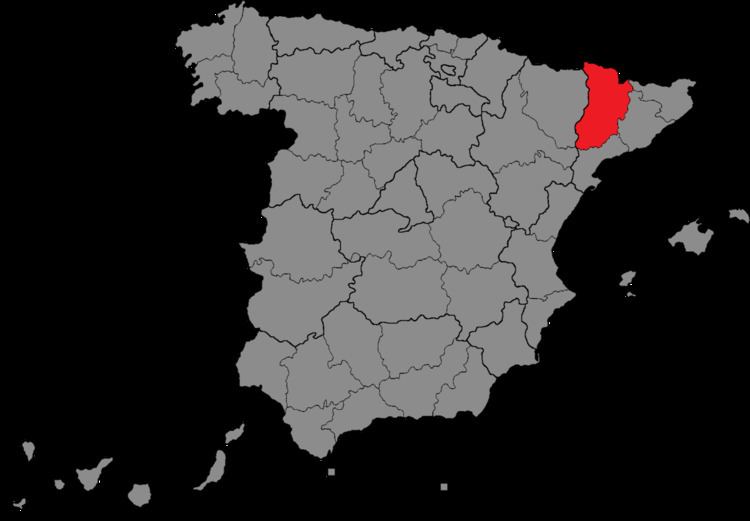Province Province of Lleida Population 436,029 (2016) Major settlements Lleida Region Catalonia Seat 4 (1977–) | Autonomous community Catalonia Electorate 313,207 (2016) Seats 4 Major settlement Lleida | |
 | ||
Created Spanish general election, 1977 | ||
Lleida (Spanish: Lérida) is one of the 52 constituencies (Spanish: circunscripciones) used for the Congress of Deputies—the lower chamber of the Spanish Parliament, the Cortes Generales. The electoral system uses the D'Hondt method and a closed-list proportional representation, with a minimum threshold of 3%.
Contents
It is one of four electoral districts which correspond to the provinces of Catalonia. Lleida is the largest municipality accounting for 97,000 voters out of the total of 313,000. The district has traditionally been one of the weakest for the national parties of the right and it was one of only two districts in the 2004 election (along with Girona) where the Popular Party failed to win a seat, though they regained the seat at the 2008 election.
Boundaries and electoral system
Under Article 68 of the Spanish constitution the boundaries must be the same as the province of Lleida and under Article 140 this can only be altered with the approval of congress. Voting is on the basis of universal suffrage in a secret ballot. The electoral system used is closed list proportional representation with seats allocated using the D'Hondt method. Only lists which poll 3% of the total vote (which includes votes "en blanco" i.e. for none of the above) can be considered. Under article 12 of the constitution, the minimum voting age is 18.
Electoral procedures
The laws regulating the conduct and administration of elections are laid out in detail in the 1985 electoral law. (Ley Orgánica del Régimen Electoral General.) Under this law, the elections in Lleida, as in other districts, are supervised by the Electoral Commission (Junta Electoral), a permanent body composed of eight Supreme Court judges and five political scientists or sociologists appointed by the Congress of Deputies. The Electoral commission is supported in its work by the Interior Ministry. On election day, polling stations are run by electoral boards which consist of groups of citizens selected by lottery.
The format of the ballot paper is designed by the Spanish state, however, the law allows political parties to produce and distribute their own ballot papers, either by mailing them to voters or by other means such as street distribution, provided that they comply with the official model. The government then covers the cost of all printed ballot papers. These must then be marked by voters, either in the polling station or outside the polling station and placed inside sealed envelopes which are then placed inside ballot boxes in the polling station. Following the close of polls, the ballots are then counted in each individual polling station in the presence of representatives of the political parties and candidates. The ballots are then immediately destroyed, with the exception of those considered invalid or challenged by the candidates' representatives, which are retained for further scrutiny. The result is that full recounts are impossible.
Eligibility
Article 67.3 of the Spanish Constitution prohibits dual membership of the Cortes and regional assemblies, meaning that candidates must resign from Regional Assemblies if elected. Article 70 also makes active judges, magistrates, public defenders, serving military personnel, active police officers and members of constitutional and electoral tribunals ineligible.
Number of members
From the 1977 onwards Lleida has returned four members.
Under Spanish electoral law, all provinces are entitled to a minimum of 2 seats with a remaining 248 seats apportioned according to population. These laws are laid out in detail in the 1985 electoral law. (Ley Orgánica del Régimen Electoral General) The practical effect of this law has been to overrepresent smaller provinces at the expense of larger provinces. In 2004 for example Spain had 34,571,831 voters giving an average of 98,777 voters per deputy. In Lleida however the number of voters per deputy was only 78,090.
